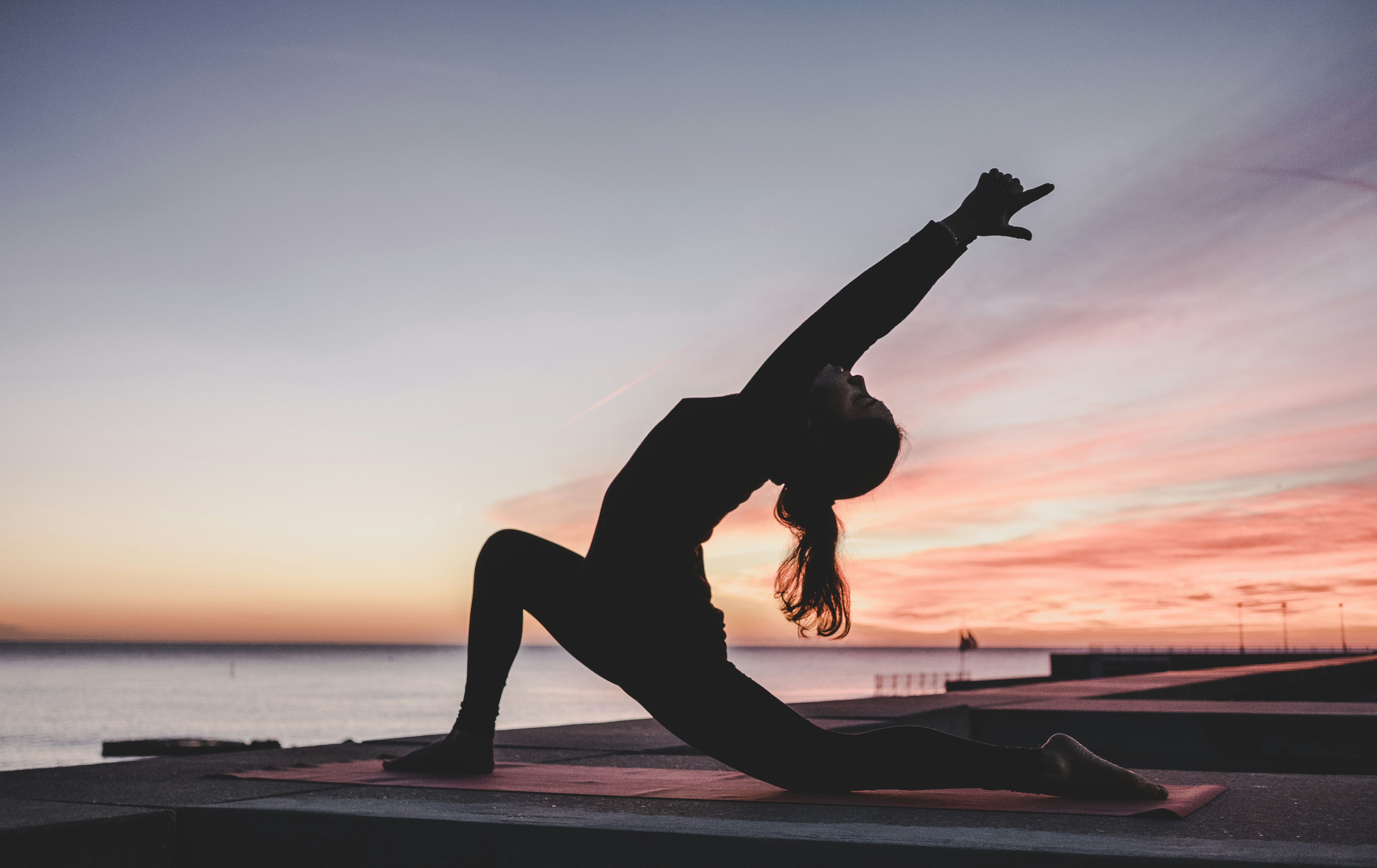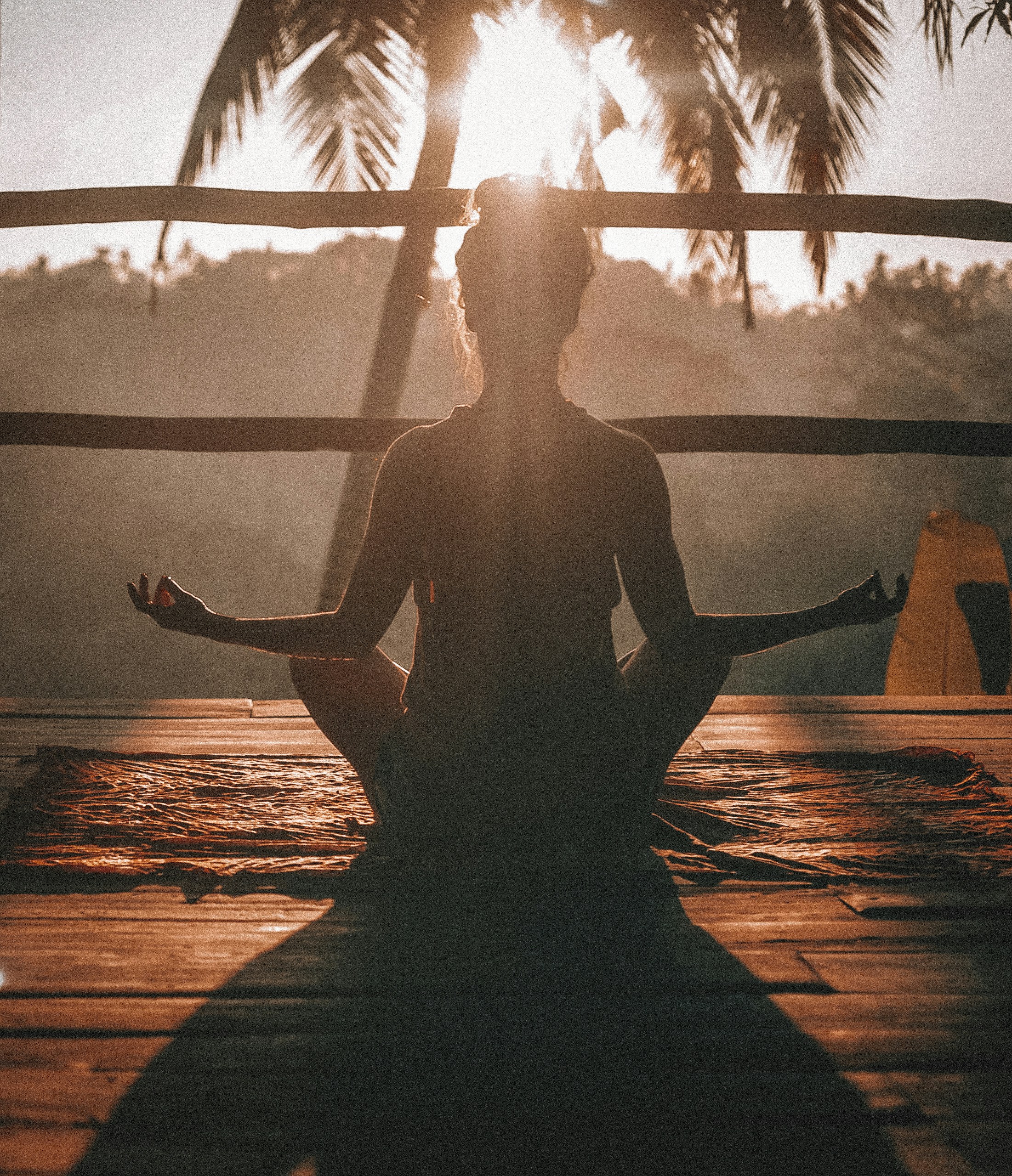Wellness Retreat Planning: Creating Transformative Experiences
Malik Mohsin Saleem Khan
December 10, 2023 · 15 min read

Introduction
In our hyperconnected, constantly busy world, the concept of a wellness retreat has evolved from a luxury indulgence to an essential reset for mental, physical, and spiritual wellbeing. These intentional breaks from daily routines offer more than just relaxation—they provide structured opportunities to disconnect from stressors, reconnect with personal priorities, and develop practices that support lasting wellness beyond the retreat experience itself.
This comprehensive guide explores the art and science of planning meaningful wellness retreats, whether you're considering an established program, creating a personalized experience, or even organizing a retreat for others. From understanding different retreat types and their specific benefits to practical planning considerations and strategies for maintaining wellness gains afterward, discover how to create transformative experiences that align with your unique needs and goals. Whether you have a weekend or several weeks, a modest budget or resources for luxury options, learn how to design retreats that offer genuine renewal rather than merely temporary escape.
Understanding Wellness Retreats: Types, Benefits, and Evolution
Wellness retreats have ancient roots in contemplative traditions across cultures, from monastic retreats to indigenous vision quests, all sharing the core concept of intentional withdrawal from ordinary life for renewal and insight. Understanding this context and the evidence for retreat benefits provides important foundation for effective planning.
The modern wellness retreat landscape encompasses diverse approaches reflecting different wellness philosophies and objectives. Meditation and mindfulness retreats focus on developing present-moment awareness and mental clarity through silent practice, guided sessions, and contemplative activities. Yoga retreats typically combine physical postures with breathwork and meditation, ranging from gentle restorative approaches to intensive training programs. Fitness and adventure retreats emphasize physical vitality through activities like hiking, surfing, or boot camp-style programs in natural settings. Detox and cleansing retreats focus on physical purification through dietary protocols, fasting, and complementary therapies. Holistic wellness retreats integrate multiple modalities including nutrition, movement, mindfulness, creative expression, and educational components addressing comprehensive wellbeing. Specialized retreats target specific populations or concerns, from grief recovery to professional burnout to relationship enhancement.
Scientific evidence increasingly supports the efficacy of retreat experiences for multiple dimensions of wellbeing. Research on meditation retreats demonstrates significant reductions in stress hormones, inflammatory markers, and anxiety symptoms, with some effects persisting months after the retreat experience. Studies of nature-based retreats show improvements in attention restoration, cognitive function, and mood regulation linked to reduced exposure to attention-demanding technology and increased immersion in natural environments. Nutritionally-focused retreat programs have demonstrated improvements in metabolic markers, gut microbiome composition, and inflammatory profiles. Beyond these physiological effects, psychological research indicates that the "strategic disconnection" provided by retreats supports cognitive processing of accumulated experiences, identity clarification, and value alignment that can catalyze meaningful life changes.
The retreat industry has evolved significantly in recent decades, expanding from primarily religious contexts to encompass diverse secular and spiritual approaches. Current trends include increasing integration of evidence-based wellness practices, greater emphasis on sustainability and ethical considerations, rising interest in local and accessible retreat options, and growing recognition of retreats as legitimate components of preventive healthcare rather than mere indulgences. The COVID-19 pandemic accelerated interest in wellness retreats as mental health challenges increased, while simultaneously expanding virtual retreat options that make certain experiences more accessible to those with constraints preventing travel or extended absences.
The distinction between genuine retreats and wellness-washing marketing has become increasingly important as the industry grows. Authentic retreat experiences provide structured containers for transformation through intentional design, qualified guidance, supportive environments, and integration support. In contrast, experiences that merely rebrand conventional vacations with wellness terminology without substantive transformative elements may provide relaxation but typically fail to deliver deeper benefits. This distinction matters for both effectiveness and value when investing time and resources in retreat experiences.
Assessing Your Retreat Needs and Objectives
Effective retreat planning begins with honest self-assessment to identify the specific needs, intentions, and parameters that will shape your experience. This foundational step ensures alignment between your unique situation and the retreat you ultimately design or select.
Clarifying your primary wellness intentions helps focus retreat planning on experiences most likely to address your specific needs. Common retreat objectives include stress recovery and nervous system regulation; clarity and perspective on life decisions; skill development in specific wellness practices; processing significant life transitions; reconnection with personal values and purpose; or physical restoration addressing particular health concerns. While retreats often deliver multiple benefits, identifying your highest priorities helps evaluate options and design elements most relevant to your situation. This clarity prevents the common mistake of choosing retreats based primarily on trending experiences or others' recommendations without considering personal fit.
"The quality of your retreat experience depends less on the destination than on the clarity of your intention and your willingness to temporarily set aside habitual patterns." — Adeline Yen Mah, physician and retreat facilitator
Honest assessment of your retreat readiness and constraints provides essential practical parameters for planning. Key considerations include realistic time availability (from weekend retreats to extended sabbaticals); budget parameters including not just retreat costs but travel and income interruption; physical limitations or health considerations that might affect activity options; comfort with specific cultural or spiritual frameworks; and psychological readiness for potentially challenging experiences like extended silence or intensive emotional processing. These practical factors significantly influence appropriate retreat selection and help prevent committing to experiences that create more stress than benefit through misalignment with your current circumstances.
Understanding your retreat personality and preferences improves satisfaction with your chosen experience. Research on retreat experiences indicates significant variation in individual responses to factors like social dynamics (from completely silent retreats to highly interactive programs); schedule intensity (from highly structured days to substantial unscheduled time); guidance level (from constant expert direction to self-guided experiences); comfort requirements (from austere conditions to luxury accommodations); and novelty versus familiarity in retreat settings. These preferences reflect both personality factors and current needs—someone experiencing burnout might benefit from minimal decisions and gentle guidance, while someone seeking creative renewal might thrive with more autonomy and stimulating surroundings.
Timing considerations significantly impact retreat effectiveness, with research suggesting that optimal timing often involves balance between sufficient urgency to motivate change and adequate stability to integrate insights. Retreats can serve different purposes at different junctures: preventive experiences before reaching depletion; restorative interventions during or after high-stress periods; transitional containers during major life changes; or developmental opportunities during relatively stable periods focused on growth rather than recovery. Recognizing your current position helps determine appropriate retreat intensity, duration, and focus for maximum benefit.
Navigating Retreat Options: From Established Programs to DIY Experiences
The spectrum of retreat possibilities ranges from fully organized programs to completely self-designed experiences, with various hybrid options between these poles. Understanding the advantages and considerations of different approaches helps identify the most appropriate option for your circumstances.
Established retreat centers and programs offer structured experiences with professional guidance, dedicated facilities, and curated environments that eliminate planning burden while providing access to qualified instruction. Leading centers typically develop programs based on substantial experience with effective formats and understand common participant needs and challenges. The immersion in environments specifically designed for retreat purposes, removed from everyday distractions and supported by staff handling logistical details, allows full focus on the retreat experience itself. These programs also provide community with fellow participants sharing similar intentions, which research indicates can enhance motivation, normalize challenges, and provide valuable perspective. However, established programs require adapting to predetermined schedules, approaches, and group dynamics, which may not perfectly align with individual preferences.
Customized retreat experiences designed with professional guidance offer middle-ground options combining personalization with expert support. Wellness travel specialists can create bespoke retreats incorporating preferred activities, accommodations, and locations while handling logistical complexities. Personal retreat guides or coaches can develop programs tailored to specific objectives, either accompanying you or providing detailed guidance for self-implementation. Certain retreat centers offer personalized programs alongside their standard offerings, providing individualized schedules and one-on-one sessions within supportive retreat environments. These customized options typically require greater financial investment but provide experiences precisely aligned with personal needs and preferences.
Self-designed retreats offer maximum flexibility and often greater accessibility, allowing experiences tailored to specific constraints including limited time, budget considerations, or inability to travel. Effective DIY retreats require more personal responsibility for creating appropriate conditions and maintaining boundaries, but enable experiences perfectly aligned with individual needs and circumstances. Key success factors include establishing clear parameters (specific timeframe, communication boundaries, defined activities); creating environmental conditions that support retreat objectives; developing a thoughtful schedule balancing structure with flexibility; and implementing accountability mechanisms to maintain retreat integrity. While requiring more planning effort, these self-designed experiences can be equally transformative when approached with clarity and commitment.
- Home-based retreats: Transforming your living space through temporary modifications, communication boundaries, and scheduled activities
- Local retreats: Utilizing nearby natural areas, wellness facilities, or simple accommodations for day or overnight experiences
- Retreat rentals: Securing appropriate spaces specifically for retreat purposes, from cabin rentals to dedicated retreat properties
- Hybrid approaches: Combining self-directed elements with selected professional services like massage, guided experiences, or meal delivery
Evaluating retreat options requires considering multiple factors beyond surface-level marketing. For established programs, research facilitator qualifications and specific training relevant to the retreat focus; program philosophy and whether it aligns with your values; typical participant demographics to assess community fit; and independent reviews focusing on transformative outcomes rather than merely amenities. For all retreat types, evaluate the balance of activities and rest; availability of nature access which research links to enhanced retreat benefits; nutritional approach and alignment with your needs; and communication policies regarding technology use and external contact. These considerations help identify experiences offering substance beyond appealing aesthetics.
Designing Effective Retreat Experiences
Whether selecting established programs or creating your own experience, understanding the elements that contribute to transformative retreats helps evaluate and design experiences with genuine impact rather than merely temporary escape.
The retreat container—the set of boundaries, agreements, and conditions that separate retreat time from ordinary life—provides the foundation for transformation. Research on transformative experiences indicates that this container creates psychological safety for vulnerability while reducing habitual defenses that typically prevent deeper insight. Essential container elements include clear temporal boundaries (defined beginning and end points); environmental separation from daily triggers and responsibilities; communication boundaries that limit external disruptions; and explicit agreements or intentions that focus attention and energy. The strength of this container significantly influences retreat depth, with stronger boundaries typically enabling more profound experiences while requiring greater preparation and integration support.
Effective retreat design typically incorporates rhythmic alternation between different types of activities and experiences rather than monotonous schedules. Key elements to balance include structured activities and unstructured time; social interaction and solitude; physical movement and stillness; mental engagement and rest; inward focus and external awareness; and challenging experiences and nurturing support. This rhythmic approach prevents both overstimulation and stagnation while addressing multiple dimensions of wellbeing. The specific balance varies based on retreat objectives and personal needs—recovery-focused retreats typically emphasize rest and nurturing, while transformational retreats might include more challenging elements balanced with appropriate support.
The retreat environment significantly influences outcomes through both obvious and subtle impacts on psychological and physiological states. Research indicates that natural settings enhance retreat benefits through attention restoration, stress reduction, and perspective-shifting effects of natural scales and rhythms. Sensory considerations including sound landscapes, visual stimulation levels, air quality, and temperature comfort affect nervous system regulation and presence capacity. Physical arrangements that limit unnecessary decision-making and reduce cognitive load support the mental space essential for insight and integration. These environmental factors explain why purpose-designed retreat settings typically enable deeper experiences than improvised locations, though thoughtful modification can create effective containers in various settings.
Retreat nutrition deserves specific attention beyond mere preference, as research demonstrates significant connections between dietary patterns and retreat outcomes. Nutritional approaches that reduce inflammatory responses and support gut-brain axis function can enhance mental clarity and emotional regulation during retreat experiences. Mindful eating practices incorporated into retreats support present-moment awareness while often transforming relationships with food beyond the retreat itself. Retreat-specific considerations include simplifying food choices to reduce decision fatigue; ensuring appropriate energy availability for scheduled activities; addressing potential detox symptoms that can arise with dietary changes; and considering how nutritional approaches support specific retreat objectives from cleansing to energy enhancement.
Planning Your Retreat: Practical Steps and Considerations
Translating retreat concepts into actual experiences requires addressing practical considerations that support transformative outcomes while navigating real-world constraints. These implementation strategies help create retreats that deliver genuine benefits rather than adding stress through poor planning.
- Establish your retreat framework: Define the fundamental parameters of your experience:
- Determine ideal timing and duration based on your objectives and constraints
- Establish budget parameters considering all costs including travel, accommodations, program fees, and income interruption
- Decide between established programs, customized experiences, or self-designed retreats based on your needs assessment
- Consider location options ranging from international destinations to local settings based on your specific intentions
- Research and evaluate specific options: Once your framework is clear, investigate aligned possibilities:
- For established programs: Research retreat centers, teacher backgrounds, program content, and participant reviews
- For self-designed retreats: Explore suitable locations, necessary resources, and potential support services
- Evaluate alignment with your specific wellness objectives and personal preferences
- Consider practical factors like travel requirements, seasonal considerations, and health/safety protocols
- Prepare logistically and psychologically: Set the stage for a successful experience:
- Handle practical arrangements including travel bookings, time off requests, and necessary supplies
- Manage responsibilities that might intrude on your retreat through delegation, automation, or clear boundaries
- Prepare physically if your retreat involves challenging activities or significant changes from your routine
- Set mental expectations and intentions, potentially journaling about your objectives and hopes
- Create your retreat schedule: Develop an appropriate temporal framework:
- For established programs: Review the schedule in advance to mentally prepare for the experience
- For self-designed retreats: Create a daily structure balancing different activities and including transition periods
- Incorporate appropriate beginning and ending rituals to strengthen the retreat container
- Build in flexibility to respond to emerging needs rather than rigidly adhering to predetermined plans
- Establish appropriate technology and communication boundaries: Determine your connectivity approach:
- Decide on complete digital detox versus limited strategic access based on your objectives and circumstances
- Communicate your availability boundaries to relevant people before beginning your retreat
- Establish emergency contact protocols for truly essential communications
- Consider physical separation from devices or use of technology management tools to support your boundaries
Budget-conscious retreat strategies make meaningful experiences accessible across different financial circumstances. Consider off-season timing at established centers for reduced rates; explore work-exchange opportunities at retreat centers that offset costs through service contributions; investigate sliding-scale programs designed for financial accessibility; or create simple self-guided experiences using free or low-cost resources like public natural areas, community facilities, or home-based retreats. The transformative potential of retreats depends more on clear intention and appropriate containment than on luxury amenities or exotic locations.
Special considerations apply when planning retreats for specific circumstances. Those with health conditions should consult healthcare providers about appropriate activities, necessary accommodations, and medication considerations during retreat experiences. Parents planning retreats must address childcare through partner support, family assistance, or programs offering children's activities concurrent with adult retreat experiences. Those with significant work responsibilities benefit from thorough preparation including advance task completion, explicit delegation, and clear communication about availability boundaries. These situation-specific strategies prevent logistical issues from undermining retreat benefits.
The Evolving Landscape of Wellness Retreats
The wellness retreat landscape continues evolving in response to changing needs, scientific advances, and cultural shifts. Understanding these emerging trends provides context for current planning while offering glimpses of future possibilities.
Science-informed retreat programming increasingly integrates research from fields including neuroscience, psychoneuroimmunology, and behavioral psychology to enhance effectiveness. Evidence-based elements appearing in contemporary retreats include specific meditation protocols shown to affect brain function; nature exposure "doses" calibrated for measurable stress reduction; nutritional approaches based on emerging microbiome and inflammatory pathway research; and carefully structured digital detox protocols addressing dopamine regulation. This science-informed approach maintains the holistic essence of retreat experiences while enhancing their precision and effectiveness through evidence-based design rather than relying solely on tradition or intuition.
Accessibility and inclusivity represent growing focus areas within the retreat industry, with increasing recognition that wellness experiences have historically been available primarily to privileged populations. Emerging approaches addressing these limitations include sliding-scale pricing models; programs specifically designed for underrepresented communities; location diversification beyond traditional exotic destinations; virtual and hybrid retreat formats reducing travel barriers; and content evolution addressing diverse cultural perspectives and needs. These developments reflect growing recognition that retreat benefits should be available across demographic boundaries rather than limited to those with substantial resources.
Specialized retreat focuses continue diversifying beyond general wellness to address specific life stages, transitions, and challenges. Emerging categories include grief and loss retreats providing supported processing of bereavement; career transition retreats for professional reinvention; creativity retreats focusing on artistic expression and innovation; relationship retreats for couples, families, or other specific connections; and climate anxiety retreats addressing emotional responses to environmental challenges. This specialization reflects recognition that different life circumstances benefit from specifically tailored retreat containers rather than generic approaches.
Conclusion
Wellness retreats offer more than temporary escape from daily pressures—they provide structured opportunities to reset patterns, gain perspective, and develop practices that support ongoing wellbeing. Whether experienced through established programs or self-designed experiences, these intentional breaks from ordinary routines can catalyze significant insights and changes when approached with clarity and purpose.
The most effective retreat experiences share common elements regardless of their specific form: clear intention setting that focuses the experience; appropriate boundaries that create separation from habitual patterns; balanced activities addressing multiple dimensions of wellbeing; and thoughtful integration supporting the transfer of insights into daily life. These elements create containers for transformation more powerful than conventional vacations or unstructured breaks, offering the potential for lasting shifts in perspective and behavior.
Perhaps most importantly, retreats remind us that wellbeing requires periodic withdrawal and renewal rather than continuous productivity and connection. In a culture that often valorizes constant activity and availability, the deliberate choice to step away—even briefly—represents a countercultural act of self-care with ripple effects extending far beyond the retreat itself. By creating space for deeper connection with ourselves, others, and the natural world, retreats offer not just personal renewal but the perspective and clarity needed to contribute more meaningfully to our communities and responsibilities upon return.
Frequently Asked Questions
How long should a wellness retreat be to be effective?
Retreat benefits typically correlate with duration, but even brief experiences can provide significant value when properly designed. Research indicates that measurable physiological changes in stress markers begin after 3-4 days of retreat conditions, while deeper cognitive and emotional shifts often emerge after 5-7 days. However, weekend retreats can still deliver meaningful benefits, particularly for stress reduction and perspective reset, when they include strong boundaries from everyday demands and appropriate expectation setting. If limited to shorter timeframes, consider preparation and integration practices that extend the effective retreat container beyond the actual time away.
How can I maintain retreat benefits after returning to my regular life?
Effective integration strategies include: gradually transitioning back rather than immediately resuming full schedules; identifying specific retreat elements to incorporate into daily routines; establishing regular mini-retreats (even hours) to reinforce insights; connecting with community that supports your new perspectives or practices; journaling about retreat experiences and continued implementation; working with a coach or therapist to navigate challenges to maintaining changes; and scheduling follow-up retreat experiences at intervals that work for your circumstances. The most successful integration approaches recognize that transformation occurs through consistent practice rather than one-time experiences, using the retreat as catalyst rather than complete solution.
How do I create an effective retreat at home if I can't travel or afford established programs?
Successful home-based retreats require creating clear boundaries despite familiar surroundings. Prepare by communicating your unavailability to others, physically organizing and clearing your space, and gathering necessary supplies. Create environmental separation through modifications like removing work materials, changing room arrangements, or establishing a specific retreat area. Develop a clear schedule including start/end rituals, diverse activities, and defined meal times. Consider technology boundaries from complete disconnection to highly limited access. Enhance effectiveness by incorporating nature experiences, even in urban settings, and potentially including virtual guidance through recorded programs or online sessions.
Malik Mohsin Saleem Khan
Founder
Author bio information


